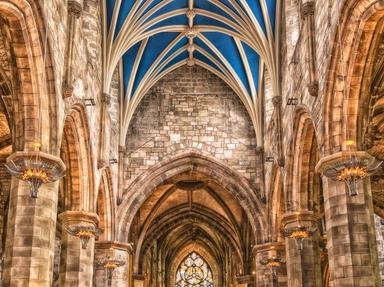Quiz Answer Key and Fun Facts
1. In which Italian city is St. Peter's in Chains located?
2. Two sets of chains may be found in San Pietro in Vincoli. Both sets are believed to have bound St. Peter, who is revered as the first pope of the Roman Catholic Church. In which of the following two cities was St. Peter imprisoned in chains?
3. All visitors at San Pietro in Vincoli are allowed to touch the chains of St. Peter at San Pietro in Vincoli as a special blessing.
4. How did St. Gregory the Great use St. Peter's chains to help others during his papacy?
5. San Pietro in Vincoli is also the burial site of which pope, who is perhaps best remembered as the patron who hired Michelangelo to paint the ceiling of the Sistine Chapel?
6. Which one of Michelangelo's statues was sculpted to be part of the pope's tomb and was eventually placed in San Pietro in Vincoli?
7. There is a legend regarding Michelangelo's famous creation that is housed at in San Pietro in Vincoli. What did he do when he was finished sculpting it?
8. One of the features of San Pietro in Vincoli is two rows of columns that are made of the same order as those in the famous Parthenon in Athens, Greece. From which of the following orders were the columns in San Pietro in Vincoli fashioned?
9. When visiting San Pietro in Vincoli, don't forget to visit the third altar in the left aisle. It contains a mosaic of which saint, a Christian martyr who is typically shown being shot with arrows?
10. Toward the left side of the entrance to San Pietro in Vincoli is the tomb of artist Antonio Pollaiuolo, an artist, metal-worker, and goldsmith in Rome during the Renaissance. He is best known for adding the infants Remus and Romulus to which already-existing sculpture?
Source: Author
ponycargirl
This quiz was reviewed by FunTrivia editor
Bruyere before going online.
Any errors found in FunTrivia content are routinely corrected through our feedback system.
